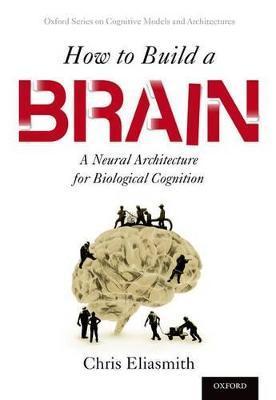How to Build a Brain: A Neural Architecture for Biological Cognition

How to Build a Brain: A Neural Architecture for Biological Cognition
One goal of researchers in neuroscience, psychology, and artificial intelligence is to build theoretical models that can explain the flexibility and adaptiveness of biological systems. How to Build a Brain provides a guided exploration of a new cognitive architecture that takes biological detail seriously while addressing cognitive phenomena. The Semantic Pointer Architecture (SPA) introduced in this book provides a set of tools for constructing a wide range of biologically constrained perceptual, cognitive, and motor models. Examples of such models are provided to explain a wide range of data including single-cell recordings, neural population activity, reaction times, error rates, choice behavior, and fMRI signals. Each of the models addressed in the book introduces a major feature of biological cognition, including semantics, syntax, control, learning, and memory. These models are presented as integrated considerations of brain function, giving rise to what is currently the world's largest functional brain model. The book also compares the Semantic Pointer Architecture with the current state of the art, addressing issues of theory construction in the behavioral sciences, semantic compositionality, and scalability, among other considerations. The book concludes with a discussion of conceptual challenges raised by this architecture, and identifies several outstanding challenges for SPA and other cognitive architectures. Along the way, the book considers neural coding, concept representation, neural dynamics, working memory, neuroanatomy, reinforcement learning, and spike-timing dependent plasticity. Eight detailed, hands-on tutorials exploiting the free Nengo neural simulation environment are also included, providing practical experience with the concepts and models presented throughout.
PRP: 618.45 Lei
Acesta este Pretul Recomandat de Producator. Pretul de vanzare al produsului este afisat mai jos.
556.61Lei
556.61Lei
618.45 LeiIndisponibil
Descrierea produsului
One goal of researchers in neuroscience, psychology, and artificial intelligence is to build theoretical models that can explain the flexibility and adaptiveness of biological systems. How to Build a Brain provides a guided exploration of a new cognitive architecture that takes biological detail seriously while addressing cognitive phenomena. The Semantic Pointer Architecture (SPA) introduced in this book provides a set of tools for constructing a wide range of biologically constrained perceptual, cognitive, and motor models. Examples of such models are provided to explain a wide range of data including single-cell recordings, neural population activity, reaction times, error rates, choice behavior, and fMRI signals. Each of the models addressed in the book introduces a major feature of biological cognition, including semantics, syntax, control, learning, and memory. These models are presented as integrated considerations of brain function, giving rise to what is currently the world's largest functional brain model. The book also compares the Semantic Pointer Architecture with the current state of the art, addressing issues of theory construction in the behavioral sciences, semantic compositionality, and scalability, among other considerations. The book concludes with a discussion of conceptual challenges raised by this architecture, and identifies several outstanding challenges for SPA and other cognitive architectures. Along the way, the book considers neural coding, concept representation, neural dynamics, working memory, neuroanatomy, reinforcement learning, and spike-timing dependent plasticity. Eight detailed, hands-on tutorials exploiting the free Nengo neural simulation environment are also included, providing practical experience with the concepts and models presented throughout.
Detaliile produsului








